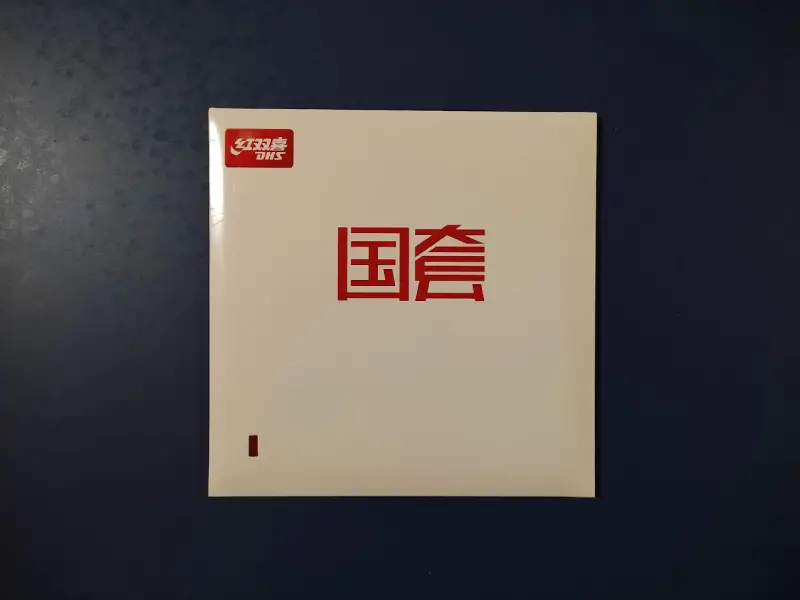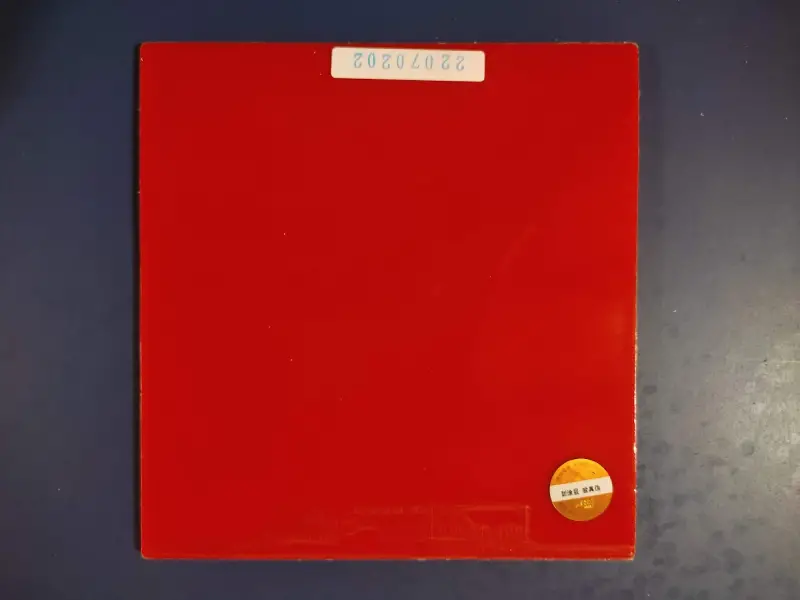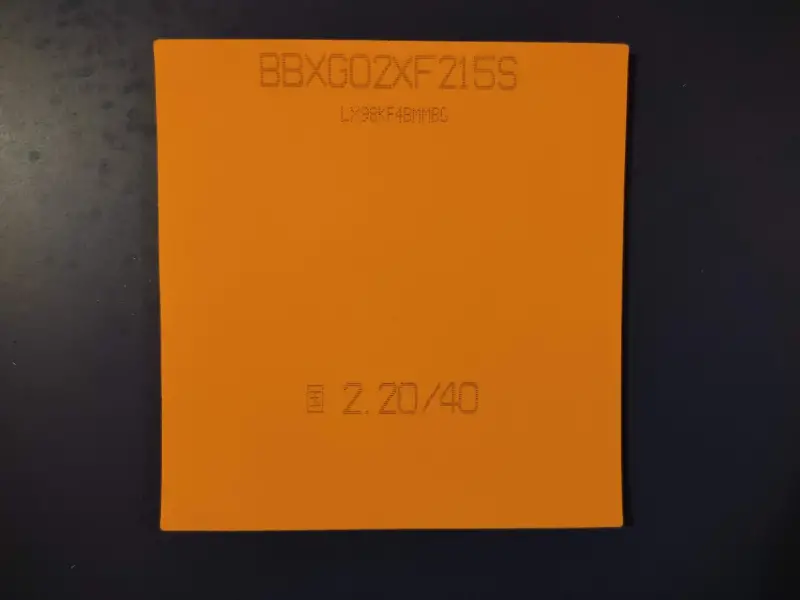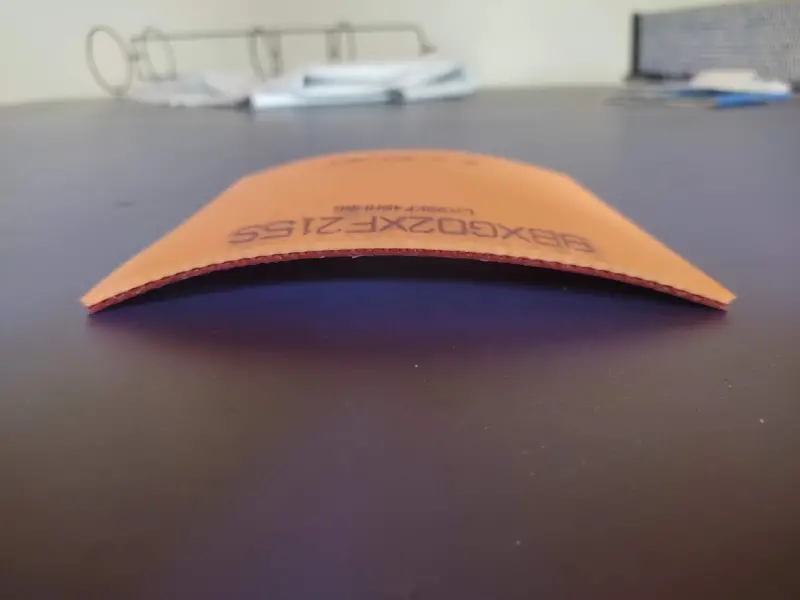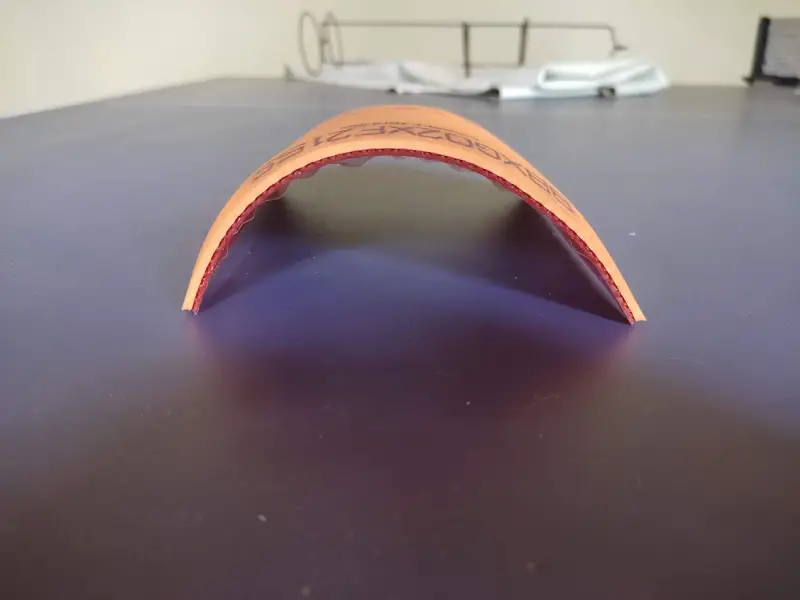Subscribe to Updates
Get the latest creative news from FooBar about art, design and business.
- Star Who Was Kicked Out Of WWE RAW Spotted On AEW Dynamite
- Arsenal to secure huge move in transfer ‘bolt from the blue’: report
- ‘He will be perfect for them’: Ex-CSK batter drops surprising name to solve Gujarat Titans’ middle-order troubles | Cricket News
- ParkySMASH! serves up a storm in Manchester!
- Who Is Bruna Biancardi? What’s Her Instagram
- FA pushes for new tournament qualifying format amid fears process is stale | The FA
- Who are the coaches of KKR for IPL 2026?
- ‘Sugarhill Gang, Grandmaster Flash, Ice Cube – I’m from that late-70s, early-80s era, so I like those kinds of raps’ John Barnes reveals the one rap song he wished he’d been asked to perform on
Browsing: Hurricane
Nov 12, 2025, 07:11 PM ET
ST. PETERSBURG, Fla. — The Tampa Bay Rays are heading home.
The team announced Wednesday it will return to an updated Tropicana Field for the 2026 season after playing their entire 2025 home schedule at Steinbrenner Field in Tampa while damage to the Trop caused by Hurricane Milton in October 2024 was repaired.
“We are excited to return home to Tropicana Field in April and to once again join our fans and neighboring businesses in downtown St. Petersburg in celebrating the return of Rays baseball,” team CEO Ken Babby said in a statement.
Repairs to the stadium’s roof and other internal areas are ongoing, and the Rays are planning to play their home opener against the Chicago Cubs on April 6 after starting the season on the road.
Editor’s Picks
1 Related
The team announced several new ticket options that go on sale Thursday, as well as ballpark upgrades including an expanded main videoboard, new video displays behind home plate and along both foul poles, a new sound system and updated suite interiors.
The team is planning events to celebrate former Rays third baseman Evan Longoria to commemorate his time with the franchise, including induction into the team hall of fame.
The Rays finished with a 41-40 record at Steinbrenner Field, the spring training home of the Yankees, and sold out 61 of 81 games while drawing 786,750 fans. Playing home games in an open-air ballpark for the first time, the Rays experienced 17 rains delays over 16 games for a total of 17 hours, 47 minutes.
Tropicana Field’s roof was torn to shreds by Hurricane Milton. The stadium that opened in 1990 featured what the team called the world’s largest cable-supported domed roof, with the panels made of “translucent, Teflon-coated fiberglass” supported by 180 miles of cables connected by struts.
The team has new owners, who are starting a search for a new ballpark that could open in 2029.
The Rays have struggled with poor attendance at the Trop, although they have at times been successful on the field with World Series appearances in 2008 and 2020.
Tampa Bay went 77-85 this year and missed the playoffs.
The team also announced infielder Bob Seymour has been released to pursue a playing opportunity in Asia.
What normally is a fantastic week of pro-am golf in the Home of Golf has been ravaged by the effects of Hurricane Amy. The lovable, celebrity-laden Dunhill Links Championship in St. Andrews has been reduced to just 54 holes as Saturday’s third round was postponed.
Sunday’s final round has thus been canceled as most of the U.K. and Northern Europe has been battling Storm Amy — the remnants of hurricanes Humberto and Imelda, which managed to merge over the Atlantic.
What that means for the golf is that Scotland’s very own, Bob MacIntyre, is looking to add to his homeland trophy case. MacIntyre caught plenty of the worst of the wind on Friday afternoon and Saturday morning, carding a second straight 66 to sit at 12 under and tied for the lead. MacIntyre said the weather was mostly as bad as he’s played in lately. He and the field were in place and ready to go with as many layers as needed, but high winds kept the course from being playable.
Photographers had a field day capturing players taking cover behind tournament signs, and MacIntyre using a massive, white hand-warmer pouch with electric heating. Metal fencing surrounding the driving range had been tipped over by high winds, which were the main delay of play on Saturday.

Getty Images

Getty Images
The Dunhill Links is a pro-am starring the likes of Bill Murray, Andy Murray — no relation, best we can tell — Piers Morgan, Catherine Zeta-Jones and many others. Groups play one round on St. Andrews’ Old Course, Carnoustie and Kingsbarns, always playing the final round of the championship on the Old Course. With the final round now canceled, teams will still play the remaining course on their journey — it just might not be the Old Course, which was covered in water whenever it flashed across the broadcast.
MacIntyre’s best competition at the moment is Richard Sterne, who also sits at 12 under. Sterne was able to avoid some of the worst weather in his draw, but will now be playing in most of the same conditions as MacIntyre on Sunday.
“After all the years of playing here,” Sterne began, “sometimes you get good draws. Sometimes you get bad draws and today I got a good draw. Pretty happy with that.”
The South African will be up against the local fans, surely, with MacIntyre’s name on the leaderboard. Just four shots back is Brooks Koepka, who has been on a Euro trip of sorts. Koepka played both the Irish Open and the BMW PGA Championship at Wentworth, missing the cut in both and even failing to break 80 in the second round of the Irish Open. Koepka then finished solo third at the French Open and is in position to contend Sunday in Scotland … so long as the weather allows.
The third and final round will kick off again at 9 a.m. local time, where the weather is currently calling for no rain, but 20+ mph winds, with gusts around 35 mph. To the victor go the spoils of a trophy, a photo shoot on the Swilcan Bridge … and hopefully a hot drink afterward.
West Ham and Millwall hadn’t faced each other for four-and-a-half years when the two teams were drawn together in the League Cup back in 2009.
The Hammers had been promoted to the top flight some years prior while Millwall were languishing two divisions below in League One.
In their past six meetings, West Ham were winless against their great rivals and had not tasted victory over the South Londoners for the past 18 years, adding further fuel to the fixture.
You may like
Ex-West Ham defender recalls pitch invasion derby win over Millwall

West Ham fans invade the pitch during their 3-1 (aet) Carling Cup win over Millwall, August 2009 (Image credit: Getty Images)
Former Manchester United defender and United States international Jon Spector, speaking to FourFourTwo via a top live odds site, recalls the build-up to the match, in which Millwall’s visiting allocation was limited to 1,500 instead of the usual 3,000.
“It was surreal,” Spector says. “I remember we didn’t normally meet up as a team at a hotel for a home game. And so we did that, and we ended up then taking a bus to the stadium, because they knew that there could be some issues getting [there], they didn’t want the players driving their cars there and running into any problems.”

Jonathan Spector signed for West Ham from Manchester United in 2006 (Image credit: Getty Images)
The Hammers had begun the season with a win over Wolverhampton Wanderers but were beaten in their next match versus London rivals Tottenham Hotspur at Upton Park.
“We took the bus, and everything around the stadium was boarded up, the windows, it was as if they knew, we’re expecting trouble. Honestly, it was very strange, and it was as if, like in my time in Florida, you’re preparing for a hurricane to come through, and you board up the windows and all that.”
The best features, fun and footballing quizzes, straight to your inbox every week.
Those anticipating potential trouble must have been cursing Millwall striker Neil Harris when he struck during the first half to give the third tier side a surprise lead.
Hammers man Jack Collison struck the upright, while Millwall fans clashed with police in what was a fraught encounter from start to finish. Mark Laird almost doubled the visitors’ advantage with a long-range effort during the second half, hitting the stanchion behind the goal instead of the back of the net.

Upton Park is no longer home to the Hammers (Image credit: Getty Images)
Trouble continued in the stands as swathes of Upton Park stewards and police did their best to keep West Ham supporters at bay, as they made repeated attempts to reach the Millwall section.
You may like
Spector recalls an ‘electric’ atmosphere on account of what happened next.
Just as the Hammers appeared to be heading out of the competition, teenager Junior Stanislas connected with Frank Nouble’s cross to level the game with three minutes left of normal time.
“There were multiple pitch invasions and so it was a very interesting time.

James Tomkins is apprehended by a West Ham supporter (Image credit: Getty Images)
“So the pitch invasions were all from, if I remember correctly, West Ham fans, so I wasn’t really kind of concerned, and it was one or two people here or there, that was it. So it wasn’t like a whole mob of people.” Spector added.
After a brief delay in clearing the pitch of spectators, the match went to extra-time. Following the restart, West Ham were awarded a penalty for handball inside the area, which Stanislas tucked away for his second of the night. Once again, fans invaded the pitch.
“Interestingly enough, that was the first game my wife – we were not married at the time – but first game she had ever attended in England”, Spector adds. “I remember after the game, her saying, ‘Are all the games like this?’ And I said, no, not at all, not at all! So she certainly remembers that game as well.”
Zavon Hines added a third late on to secure West Ham’s passage to the next round but with emotions already heightened, disorder spilled out onto the adjoining streets around Upton Park at full-time.

Carlton Cole of West Ham United is mobbed by fans during the Carling Cup second round match between West Ham United and Millwall (Image credit: Getty Images)
One Millwall supporter was stabbed, and the Football Association subsequently condemned the scenes, issuing West Ham with a £115,000 fine. Ex-Hammers boss Harry Redknapp urged football’s authorities to prevent the two clubs from ever playing each other in a cup match again.
Eighty arrests were made, while West Ham banned 54 supporters for life. The two teams have played each other since, although the last time they met was in 2012.
Spector went on to play for Birmingham City, Orlando City and Hibernian before retiring in 2019. He won 39 caps for the United States.
Hurricane Helms recently shared a surprising take, naming a shocking WWE star as one of the most underrated people in the business.
In a recent post on social media, Helms quoted a photo of Akira Tozawa, who had posted on X a photo of himself in a match. In the post, Tozawa questioned how many more matches his body can handle. In the quote, Helms said Tozawa could be one of the most underrated talents on TV.
“Maybe the most underrated Talent on TV currently. Or at least in the convo,†said Helms in his post.
Fans were quick to react to the post. Many joked that Helms — a match and talent producer at WWE — should do something about it. Many also agreed, noting that Tozawa doesnâ€t seem to get the credit he deserves for his career.
Tozawaâ€s career has spanned over 20 years in wrestling. The star originally came up in Japanâ€s Dragongate promotion, where he has won several titles throughout his career. In 2016, the star signed with WWE, and is also a decorated champion there. Tozawa is a one-time WWE Cruiserweight Championship, and has also held WWEâ€s 24/7 Championship 16 times.
Recently, Tozawaâ€s role in WWE has been more or less a side role. Heâ€s been involved with Alpha Academy since 2023, and has mostly appeared in comedic opportunities. Despite this, Tozawa sitll has a dedicated fanbase.
READ MORE: WWE SmackDown Results: Review, Grades, Card For Sept 26
What do you think? Is Akira Tozawa really one of the most underrated stars on TV? Let us know in the comments section below.
Released in 2001, the DHS Hurricane 3 National is, quite possibly, the best table tennis rubber of all time.Why so? Simply because itâ€s won more Olympic medals and important tournaments than any other rubber.
Hurricane 3 National is the weapon of choice of the Chinese National Team. Because of their success, many non-Chinese players have also picked up this rubber.
This rubber is extremely hard and sticky, and itâ€s supposedly one of the spinniest rubbers there is. It has many unique advantages and disadvantages, which weâ€ll discuss in this review.
We bought and boosted a sheet of the Hurricane 3 National, played with it for around 10 hours to see what itâ€s all about, and weâ€ll help you decide if it would be a good fit for your game.
DHS HURRICANE 3 NATIONAL REVIEW SUMMARY
The Hurricane 3 National features an extremely hard sponge and a tacky topsheet.
The strongest attribute of this rubber is its vast range of gears. Thanks to the spongeâ€s hardness and tackiness, itâ€s extremely easy to manage the speed of the game. Touching short is effortless and if you swing harder and harder you can produce extreme power.
However, we have mixed feelings about the Hurricane 3 National. Throughout our testing, we didnâ€t feel like paying the almost $100 price tag and going through the hassle of boosting it was worthwhile.
Perfect for: Intermediate, upper intermediate, and advanced offensive players on their forehand side, advanced players on their backhand side. 3-10+ years of playing.
Benefits
Has all the gears.
Probably the best offensive rubber for playing out the short game.
Superb at overpowering incoming speed and spin.
Great spin when brushing the ball.
Drawbacks
Very hard to use.
Need a high swing speed to attack powerfully.Â
Most other rubbers will produce higher-quality shots at the amateur level.
About the Reviewer

Alvaro brings 7+ years of playing experience. He’s tested 20+ rubbers for Racket Insight and his style is The Controller.
About the Review
Blade Used: Stratus Power Wood
Rubber Thickness: 2.15mm
Hours Tested: 10+
Page Contents (Quick Links)
Recommended Playstyles
We recommend the Hurricane 3 National to intermediate, upper intermediate, and advanced offensive players who play a Chinese-style powerlooping game.
Design of the DHS Hurricane 3 National
The DHS Hurricane 3 National comes in specially designed white packaging, marking it apart from other rubbers in the Hurricane range.

Inside, we can find the rubber. We ordered a red sheet, of 2.2mm thickness, in 40-degree hardness.

The topsheet of the rubber, as expected, is extremely tacky. It is definitely tackier than the regular Hurricane 3 NEO weâ€ve also reviewed.
Hereâ€s a short clip showing just how tacky this Hurricane 3 National really is:
The sponge itself is extremely, extremely hard. We used our durometer to test its hardness, and its adjusted reading was 59° on the ESN scale (after boosting it!). This is comfortably the hardest rubber weâ€ve ever reviewed.

Speaking of boosting, for this review we treated the rubber with two layers of Falco Tempo Long.
If you donâ€t know what weâ€re talking about, hereâ€s our full guide on how to boost a table tennis rubber.
In short, boosting is a process in which a chemical product, called booster, is used to soften the sponge and give it more tension. This process is supposed to give the rubber a better feeling, more speed, and more spin.
We applied a light layer of Falco Tempo Long and waited for 24 hours. The rubber domed slightly:

Afterwards, we applied a second layer of booster and let the rubber sit for another 24 hours. This was the result:

As you can see, the rubber was so domed that it was impossible to glue in that state.
So, I waited for around 5 days for the rubber to flatten before gluing it onto my racket. Itâ€s very important that you wait this time so that the rubber stays on the blade after you glue it.
Before continuing our review, I must stress that boosting these rubbers is, in my opinion, mandatory if you intend to use them for offensive play.
There will be people whoâ€ll say you can play with these rubbers unboosted.
But then, whatâ€s the point? If you want to use this rubber to attack, and youâ€re paying $100 to use an extremely hard and slow rubber, you would have been better off spending that money elsewhere.
As for which booster to use, most people recommend using Haifuâ€s booster, and others recommend using Kailin. Ma Lin and other Chinese players boost their rubbers with Haifu, so if youâ€re going to purchase a booster for your Hurricane 3 National Iâ€d recommend Haifu.
We used Falco because thatâ€s what we had at the time, and it did the job.
The Pong Professor published a video some time back testing the effects of different boosters on the Hurricane 3. Iâ€ll link it below for you to take a look if youâ€re interested.
The effect of the Falco booster is supposed to last anywhere between 1 and 2 months. After that, the rubber would lose its added speed and youâ€d have to boost it again (most likely with reduced effect) or change it for a new sheet and start all over again.
Itâ€s important you understand boosting so that you know what youâ€re getting into if you buy this rubber. You canâ€t play with it out of the package, you have to go through a whole multistage procedure to soften it up and give it more speed which takes around a week.
After all the effort, these effects will last for two months before needing to do it all over again.
I donâ€t know about you, but, when I buy a new rubber, I want to glue it ASAP and head to the club. Needing to wait 1 week to play with it is quite a hassle if you ask me.
But, all of this is warranted if the playing characteristics are excellent, right? Letâ€s talk about that then.
Playtesting the DHS Hurricane 3 National
We tried the DHS Hurricane 3 National with our usual testing blade: the Donic Original Carbospeed.
The combination wasnâ€t the best, as the Donic blade is very hard and stiff, and the 40° Hurricane we got is also extremely hard at 59 degrees ESN.
In the end, the whole combination ended up being very hard to use and quite hard to get the characteristic spin out of the Hurricane.
This wasnâ€t due to a lack of grip, far from it, as this rubber excels at spinning the ball, but rather, from a lack of flexiness and softness from the whole setup.
If we were to do this all over again, Iâ€d get a softer Hurricane, the 38-degree version, or the 39-degree version at most, and pair it with a softer and more flexible blade, like a Viscaria or a 7-ply all-wood blade, like a Clipper.
I highly recommend going for the 38 or 39 variants rather than the 40-degree one.
In terms of speed, the base speed of this setup (believe it or not) was extremely slow, even with an OFF+ blade and two layers of booster.
It was really hard to put speed on the ball. I had to swing with excessive force to get speed out of the rubber. If I didnâ€t, Iâ€d fail to produce any kind of successful attack.
Driving and Looping
This rubber was, without a doubt, made for looping. Looping with this rubber has a unique set of advantages and disadvantages but Iâ€ll come to that soon. Letâ€s start with driving and flat-hitting.
I honestly found driving and flat-hitting the ball with this rubber well below par, considering this is an offensive rubber.
The reason is due to its stickiness and slow base speed. Even though we get a relatively good sense of control, the ball sticks to the rubber for way too long, and itâ€s very hard to get high speeds with flat hits.
European rubbers with grippy topsheets and bouncy sponges are miles, miles ahead of Chinese rubbers when it comes to driving and flat-hitting the ball. They simply shoot the ball in a faster and more direct way.
This is why Chinese players twiddle their rackets when smashing, the bouncier rubbers on their backhand side are much better for these strokes.
In terms of loops, the Hurricane National produces shots with a medium-low to low arc, which I didnâ€t like. Some people argue that the Hurricaneâ€s low throw is an advantage because your shots are harder to block or counterloop.
I believe that, at an amateur level, the safety you get above the net is much more important than the benefit we just mentioned.
This rubber has an extremely unforgiving throw: itâ€s low so you donâ€t get much clearance over the net but itâ€s also long, the ball doesnâ€t dip as violently as with Euro or hybrid rubbers unless you brush the ball perfectly.
Itâ€s said that Chinese rubbers are hard to use because itâ€s hard to clear the net but itâ€s also hard not to overshoot the table. This holds true with the National Hurricane. If you mishit the ball, both scenarios can happen.
In terms of looping, other than its throw, you can get good speed and spin out of the Hurricane, but you can get power much easier with other rubbers to be honest.
The speed and spin we got when powerlooping was adequate but the quality we got on regular loops was below par. ESN rubbers and hybrid rubbers are much better in this respect.
Hereâ€s a video showing the shot quality you get when looping with the National Hurricane 3:
In terms of open-ups, the Hurricane 3 was quite enjoyable. If you swing upwards, you can get tons of spin on the ball. If you also hit forwards, you can easily hit winners against backspin.
The Hurricane is great at overpowering incoming spin. This is one of the strengths of tacky rubbers, they stick onto the ball and change the spin more easily than grippy rubbers. This makes it possible to “ignore†incoming spin to some extent.
This effect comes in very handy when counterlooping. Counterlooping close to the table was quite difficult because of its throw, but not because of the incoming spin.
Iâ€m sure that with a flexier, higher-throwing blade the Hurricane would be a great counterlooping rubber. On the Carbospeed however, the throw was a bit too unforgiving.
Counterlooping away from the table yields great results if you swing fast. You have more time to set up a big attack, and therefore, to accelerate onto the ball.
You probably wonâ€t pass anyone on speed alone but you can load the ball with incredible amounts of spin.
Serve and Receive
The DHS Hurricane 3 National is probably the best offensive rubber to serve and receive with, period.
In terms of serves, it produces tons of spin, is very easy to keep the ball low to the net, and itâ€s also extremely easy to control the ball. I was able to place the ball anywhere I wanted on serving.
In terms of serve receive, this rubber is the best high-performance rubber there is when it comes to the passive receive.
Touching short is effortless and you can push the ball shorter and lower than with any other rubber. You just have a lot more control and time with the ball.
Because the sponge has very little bounce and the topsheet is sticky you can control the ball superbly. Itâ€s a benefit that also holds true when it comes to pushing long.
This is one of the biggest strengths of Chinese rubbers: they support the Chinese 3rd ball attack style by being exceptional for serving, and they make it easy to touch short and set up opportunities for your own attack this way.
In terms of the active serve receive (flicks) we didnâ€t really enjoy using the Hurricane. We much prefer flicking with bouncier and higher-throwing rubbers, but if youâ€re going to use it on the forehand side it doesnâ€t make much of a difference as the forehand flick isnâ€t played that often.
Blocking and Chopping
Blocking with the Hurricane 3 National is like a double-edged sword.
On the one hand, its slow speed makes it easy to control incoming speed.
On the other hand, the Hurricane is so slow that if you perform passive blocks with this rubber, youâ€re going to hand your opponent an extremely easy ball.
Blocking with this rubber is just not viable past a certain level. You do have good control but neither passive nor active blocks are effective at giving you a chance to win the point.
In terms of chopping, this is a superb rubber. Many defenders play with the Hurricane 3 and itâ€s easy to see why: you get great control over the ball, you can put tons of spin onto it and itâ€s not hard to control the height of each chop.
Hurricane 3 National Alternatives To Consider
Overall Reflections on The DHS Hurricane 3 National
The Hurricane 3 National is the perfect offensive rubber for some players under the right circumstances, if and only if certain criteria are met:
- The player must have a very high swing speed (and good athleticism, if possible).
- The player should choose exactly the correct hardness (we recommend 38 or 39 degrees).
- The player should boost the rubber (we recommend 2 layers of Haifu booster).
- The player should pair the rubber with a suitable blade, like a Viscaria or a Hurricane Long V.
- And, the player should play with a traditionally ‘Chinese†style technique.
Under any other circumstances, Iâ€d recommend other rubbers. Simply because you can grab any offensive blade, slap on some European offensive rubbers, and you will have a good enough racket for offensive play.
More importantly, youâ€ll have a much safer, easier to use and more confidence-inducing racket.
However, for the right player, the Hurricane 3 is a beast in the short game, superb for power looping, counterlooping, and allows you to deliver unbeatable serves.
In my experience, my swing speed wasnâ€t nearly enough to reap the offensive benefits of the Hurricane, and Iâ€d very much prefer using safer and bouncier rubbers.

Alvaroâ€s a qualified ITTF Level 1 Coach who’s been playing Table Tennis since he was 15 and is now ranked within the top 50 in his native Argentina. He loves to compete in provincial tournaments and is always looking for ways to improve. Alvaro made his favorite memories with a racket in hand, and he joined the RacketInsight team to share his passion with other players!
Blade: Butterfly Fan Zhendong ALC | Forehand: Butterfly Dignics 09c | Backhand: Butterfly Tenergy 19
Playstyle: The Controller

